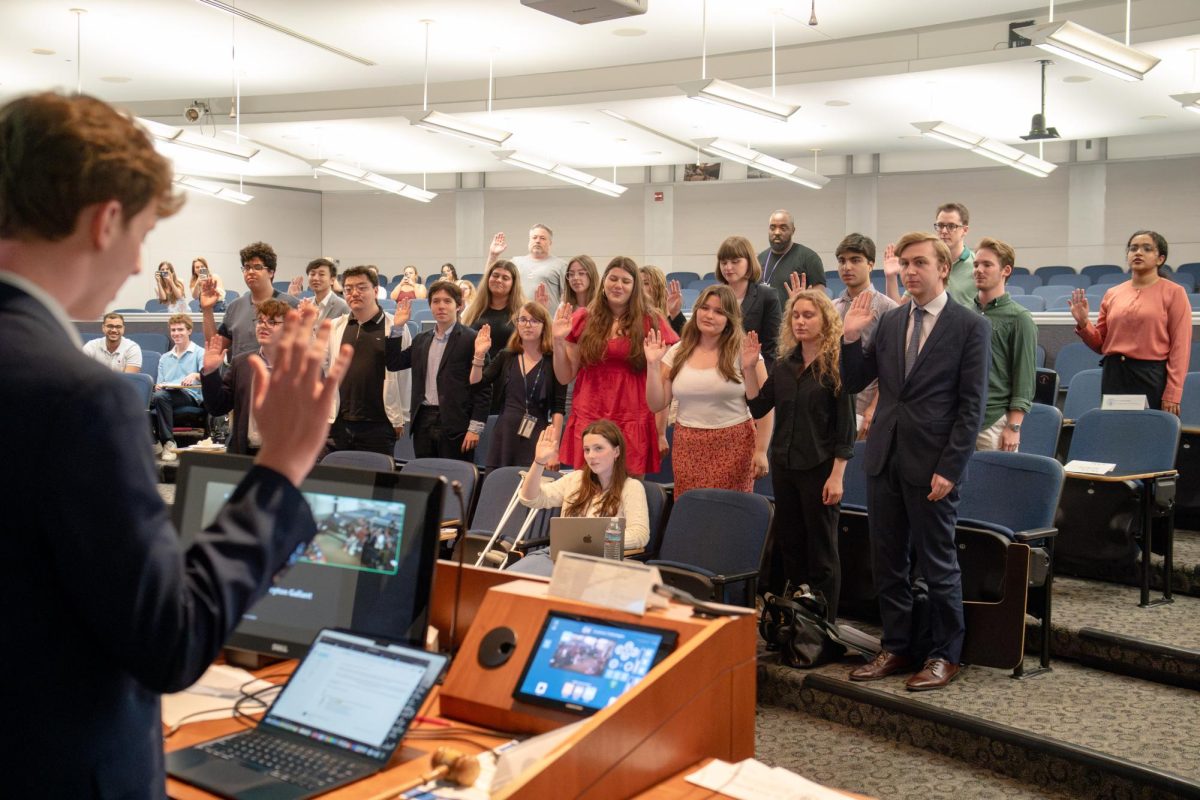The economic stimulus bill passed by the House of Representatives last week will create a tax credit for families with students in college and increase funds for Federal Work Study programs and Pell Grants.
The $819 billion package will allocate a total of $159 billion toward education, ranging from kindergarten to the university level, over the next two years.
Kent Springfield, the University’s assistant director of government and international relations, said several of the bill’s proposals could benefit GW students.
“We are pleased to see increases in Pell Grant funding, Stafford student loan limits and work study funding in the bill,” Springfield said. “All of these are positive steps toward making college more affordable.”
But Springfield said GW is worried that private universities could be discriminated against by some of the bill’s provisions, which are aimed at assisting public universities.
“We are concerned about any provisions that would limit the ability of private colleges or universities to access research or infrastructure funding included in the bill.” Springfield said. “These concerns are largely shared with all other private universities, and we are working with our associations as the legislative process develops.”
Currently, GW does not have any registered federal lobbyists but it belongs to several associations that lobby on behalf of higher education interests.
If the bill is passed, the roughly 1,000 students who received Pell Grants will see an increase of $500 each, to a total of $5,350 per year.
Pell Grant recipients at GW receive the maximum amount of money granted due to the University’s high tuition, said Dan Small, executive director of financial aid.
Small said that if passed, the stimulus bill “will rejuvenate the entire financial aid process,” but added he hopes that the stimulus package’s benefits will extend beyond GW’s Pell Grant recipients.
“Students receiving Pell Grants will greatly benefit if this bill goes through,” Small said. “But, we wish there was a way where we could get more students to get the grant as well as receive more money.”
More than $10.3 billion of the package is slated to grant $2,500 tax credits for students attending college and a portion of the bill is designated for construction projects at higher education institutions. The $300 million science and engineering center proposed at GW is a project that could potentially receive funding, but Springfield said the University is not counting on support.
“We are paying close attention to these [stimulus] bills as they work their way through the legislative process and are advising the University administration on possible funding opportunities that may be presented by the final legislation,” Springfield said. “In its current draft form, the bill focuses on ‘shovel ready’ infrastructure projects. It’s unlikely that anything in the stimulus will be helpful for large projects like the science center.”
The bill is scheduled to appear before the Senate, but some are anxious about its passage since no Republicans voted for it in the House vote.
“How do students feel about being in thousands of dollars of debt after college?” asked Tony Mazzola, communications director for Sen. John Ensign, R-Nev. “They’re going to have to repay that debt. But this bill won’t be in full effect until two years from now. How much of a stimulus is this going to be if it isn’t spent soon and it takes two years?”
With the two-year investment of the bill, the budget of the Department of Education would increase from $60 billion to $146 billion by 2010. It would be the largest increase in federal aid since World War II.
D.C. is slated to get the most funding per student at $1,289, according to an analysis by the New America Foundation, a research group that focuses on education spending.
“It is too early to tell exactly what the impact will be for GW students,” Springfield said. “We hope, however, that there will be an increase in several kinds of financial aid that will benefit our students.”







